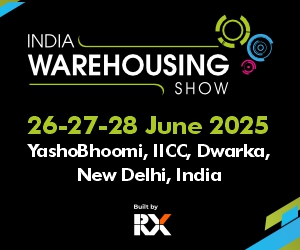Indian Auto LPG Coalition Urges Government to Promote Auto LPG as a Clean and Cost-Effective Fuel Option
New Delhi, Delhi
- The government has incentivized EV and CNG, however, Auto LPG has always been a non-subsidised fuel in the country despite it being one of the cleanest.
- OEMs must launch LPG variants aggressively in order to cater to the growing demand for eco-friendly and cost-effective vehicles.
There have been recent reports flagging a sharp decline in sales of Auto LPG vehicles since 2019 in India. A top automaker has even said to have stopped the manufacturing of its LPG models. For a country that is home to the largest number of polluted cities among the fifty most polluted in the world with nearly 15% of its pollution coming from transport sector, the dipping sales in auto LPG vehicles is baffling. After all, auto LPG is said to be the third-most popular mobility fuel after petrol and diesel worldwide due to its enormous environmental and cost benefits.
Over decades, some of the most advanced regions or countries in the world including Europe, Australia, Japan, Russia, Italy, South Korea, Turkey, Bulgaria and the United States have seen the development of a well-oiled auto LPG ecosystem as a significant alternative to the conventional fossil fuel-based petrol and diesel. While Europe has 15.7 million vehicles powered by auto LPG and serviced by a 47,000-strong refuelling stations, a whopping 95% of taxis in South Korea run on auto gas. Similarly, 50% of taxis in Australia as also most taxis in Japan run on auto gas. And in the US too, auto LPG has seen demand from vehicle fleets including school buses, goods delivery and other government and non-government agencies. In Turkey, almost 40% of passenger vehicles and 26% of all vehicles run on Autogas. In Bulgaria, as much as 90% of LPG is consumed as an auto fuel. In Ukraine, auto gas accounts for more than one-fifth of total auto fuel consumption.

Suyash Gupta, Director General, Indian Auto LPG Coalition said: “For years now, we have been imploring the government to allow auto LPG a level-playing field in the Indian auto fuel market as a part of its broader low-carbon energy transition as well as mobility strategy. If auto LPG can turn out as the most preferred and used fuel after petrol and diesel in most other parts of the world, what is it that prevents India from taking the auto LPG route in a more vigorous and sustained manner. After all, India does have a colossal environmental and pollution challenge on its hands with particulate matter pollution especially playing havoc with human health in our cities and elsewhere. Although low in per capita terms, India is also the third largest emitter of CO2 globally. For their part, vehicles running on autogas not only produce 90% fewer particulates and 98% lesser nitrogen oxides emissions than petrol-powered vehicles, but also up to 20% less CO2 than equivalent petrol models, all of which cannot be overlooked by any government,”.
“The price of auto LPG has been consistently below the price of the carbon-emitting petrol and diesel in our country. In fact, the price differential in some regions particularly the south Indian market has come down to nearly 50% in recent times. Yet, traction is yet to be seen for a shift to this near-perfect clean fuel alternative. So, just as other developed and high-income countries have promoted extensive auto LPG usage through policy intervention, whether for commercial or personal use, India must also provide sufficient policy stimulus. In other words, the authorities need to reduce the payback period or the breakeven distance for a vehicle owner to opt for either converting his existing petrol vehicle, or for purchasing a high-cost factory-built variant. For conversion, it is time that we reduce the exorbitant 28% GST on conversion kits and relax Type approval norms for them, process which is highly costly as well as tiresome. Similarly, OEMs must be encouraged through bringing down GST on auto LPG and other incentives. With the shale gas finding having transformed the US from an energy importer to an exporter coupled with India’s improved terms of agreement with West Asian suppliers, there is stability in terms of supply and pricing. At the same time, the existing vast supply and distribution network set up on account of project Ujjwala has already lowered the entry barriers for distribution across the country,” added Mr. Gupta.




